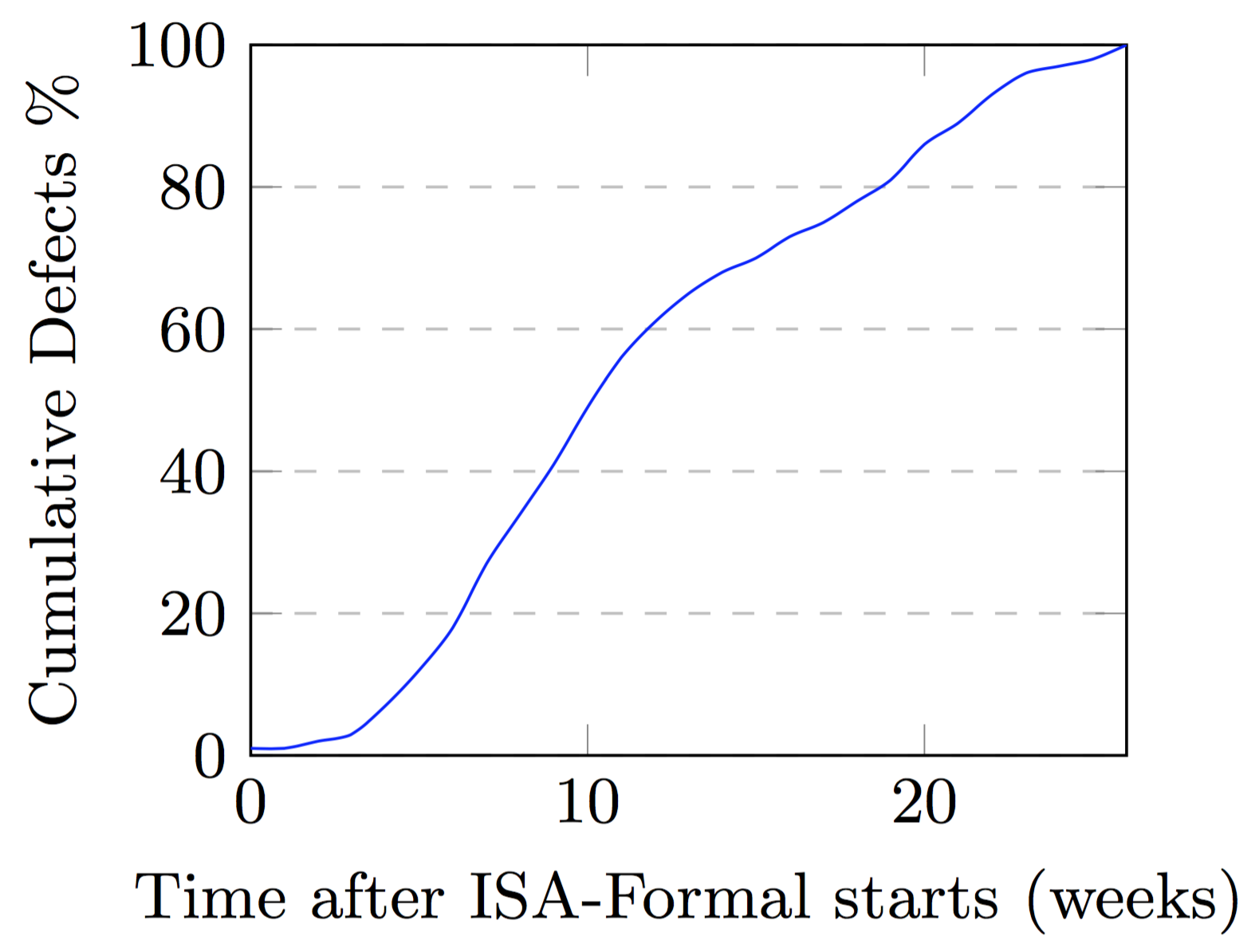Verifying against the official ARM specification

It takes a lot of effort to create a processor specification. The ARM v8-A and ARM v8-M specifications we use in the paper are over 50,000 lines of code. Even if we restrict our attention to the instruction parts, there are still more than 31,000 of code and more than 1,500 instruction encodings.
And if you think you can write that much code without introducing errors, then you are fooling yourself. So you either need to hope that you make different errors in the specification than in the processor or you need a plan for how you will test your specification. (That is the subject of my other paper “Trustworthy Specifications of ARM v8-A and v8-M System Level Architecture” that I just had accepted by the Formal Methods in Computer-Aided Design (FMCAD 2016) conference.)
So what I decided to do is to take advantage of the fact that ARM already produced a specification that they invested a lot of effort into producing and that was almost parseable, almost type checkable and almost executable. “All I had to do” was to implement the tools, fill the gaps and fix the bugs so that I could delete all occurences of the word “almost” from the previous sentence.
Once I had done that, I had a specification of the ARM ISA that I trusted — but it was in a language that model checkers did not support. So, before we could use it with ISA-Formal, I had to write a translator that converted the ARM specification into a language that model checkers did accept.
Since the overall goal of ISA-Formal is to verify processors written in Verilog, that meant that I had to learn Verilog so that I could translate the specification to Verilog. Here I was in for a shock. In software development, I am used to compilers being fairly reliable, implementing the entire language they claim to implement and detecting and reporting most of the obvious errors which make compilation impossible. Despite the fact that Verilog implementations have a significantly higher price tag than C compilers, I found that none of these properties held for Verilog implementations. None of them implement the full language, there is little agreement between them about which subset they will support or which subset they implement correctly and they will happily accept code with very obvious errors without complaint.
Cynical people, might suspect that tool vendors do this so that they can sell you linting tools, testing tools, formal tools, etc. to check for these errors. But I choose to believe the happier story that EDA vendors think of Verilog as a scripting language, not a compiled language and discovering errors is just part of the wild adventure of building a chip. After all, if it was easy, everybody would be doing it.
The upshot of all this is that, as I was learning how to generate Verilog, I also had to experimentally figure out which subset was supported by all the tools I wanted to use and seemed to be implemented correctly by all of them.
The final bit of the puzzle was figuring out the interface between the machine-generated code, the processor and the checking infrastructure. The main trick here was that we needed the interfaces to match the concepts in the architecture. So we had to find functions in the architecture spec that were a good match for interfaces in the processor and find variables in the architecture spec that were a good match for registers in the processor. It was not obvious that this was going to be possible when we started: there is no reason that the interface should match and lots of reasons why it should not match. And it seemed likely that the exact interface would have to be changed from one processor to another which would make it more work to port the method between processors. Fortunately, we found that all processors seem to have a few common pinch points where they all provide roughly equivalent interfaces and those interfaces carry approximately the same information as some function call interface in the architecture spec For example, the memory interface, the FPU interface, the decode interface, etc. (I’m not saying they don’t have their quirks — but the semantic gap to be bridged is not too large.)
Once we had figured out how to generate Verilog and how to attach it to the processor and verification framework, we could finally start bug hunting and after a few weeks of warmup, we started detecting bugs at a steady rate.

And as a bonus, we create a virtuous circle where not only do we find bugs in the processor but we also find bugs in the specification. So the specification (and my tools to process the specification) become even more accurate formalizations of the (informal) architecture specification expressed in the rest of the ARM Architecture Reference Manual.
This is one of several notes I am writing about the key ideas in our paper “End-to-End Verification of ARM Processors with ISA-Formal” which I am presenting at the 2016 International Conference on Computer Aided Verification on Friday 22nd July. There is nothing quite like trying to squeeze a 16 page paper into a 16 minute presentation for figuring out what the important messages are and how to present them.
The opinions expressed are my own views and not my employer's.